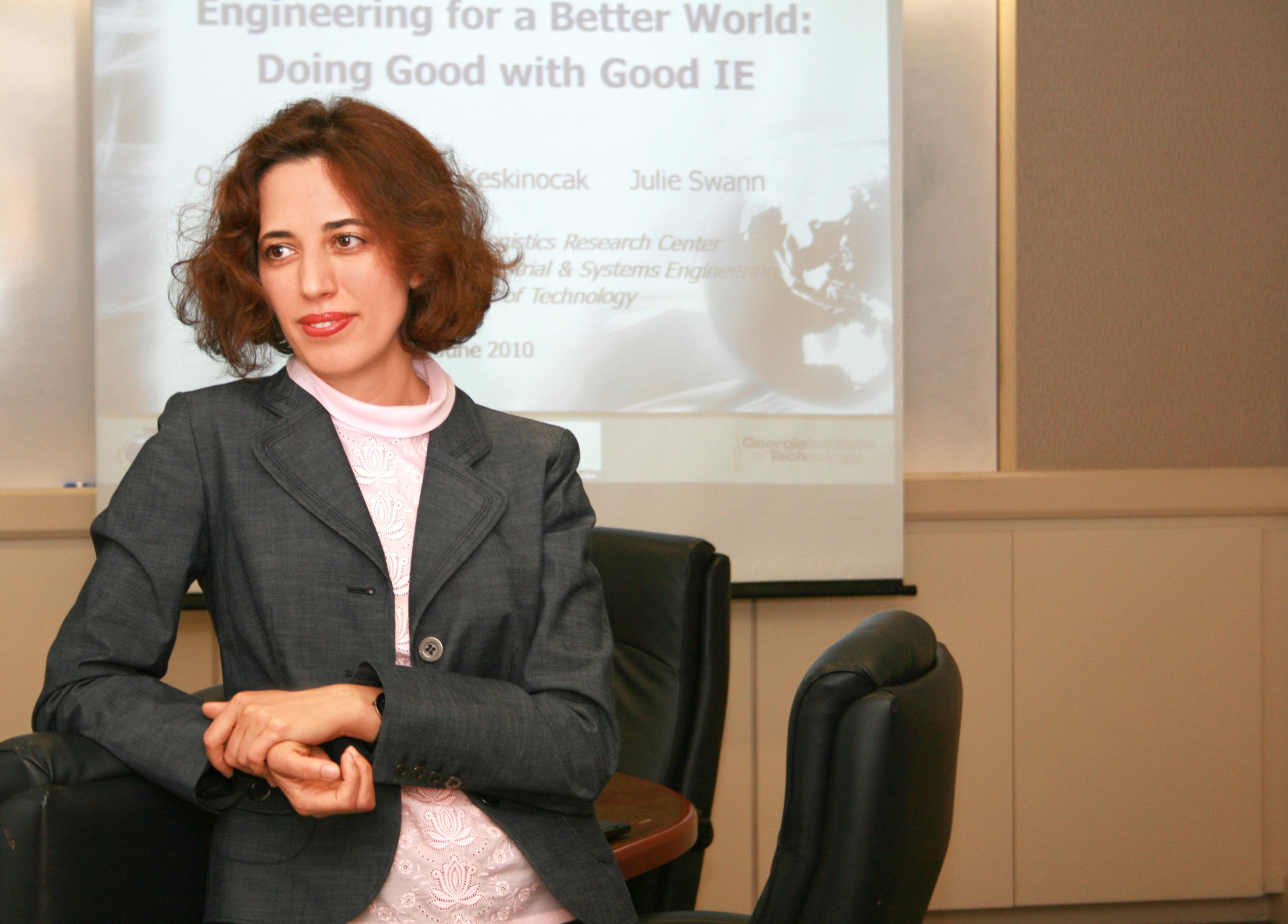Today’s most pressing problems faced by humanity and our planet are complex, requiring a systems-level perspective. Pinar Keskinocak, ISyE’s William W. George Chair and Professor, emphasizes the systems engineering perspective in her work focusing on health and humanitarian fields.
“Systems have multiple components, such as organisms, resources, information, and activities, with various interactions among those components and the environment in which they operate as well as other systems,” said Keskinocak. “A narrow or myopic view, which focuses on one part of a system and ignores how that part interacts with the others, could not only lead to suboptimal solutions but also cause more harm than good in some cases.”
Keskinocak is also the Co-director of Georgia Tech’s Center for Health & Humanitarian Systems (CHHS) along with Julie Swann, Harold R. and Mary Anne Nash Professor. The Center, founded in 2007 by Keskinocak, Swann, and and Özlem Ergun, now a professor at Northeastern University, was elevated to an Interdisciplinary Research Center at Georgia Tech in 2015.
In 2014, the Center changed its name from the Center for Health & Humanitarian Logistics to the Center for Health & Humanitarian Systems to better reflect the Center’s focus on systems.
“Humanitarian logistics is traditionally associated with procurement, transportation, and distribution operations for disaster relief or longer-term development activities,” said Keskinocak. “In addition to our ongoing focus on logistics, we place a strong emphasis on incorporating systems transformation for complex, long-term challenges.”
The Center has three primary areas of activity: education, outreach, and innovative solutions and research.
Keskinocak and team work with a variety of external organizations on addressing complex problems. They start by focusing on the symptoms, quantifying them to the extent possible, exploring possible root causes, developing potential solution approaches and estimating their impact under various scenarios, and then making recommendations.
“Our goal is to apply our expertise to help our partners improve the efficiency and effectiveness of their organizations, leading to a positive impact on people’s lives,” said Keskinocak.
Depending on the application, Keskinocak’s work has led to different outcomes, such as hands-on decision support tools or policy-level recommendations. For example, in her work on modeling infectious diseases, such as cholera or pandemic flu, the models and analysis lead to “recommendations on the most effective intervention strategies or the allocation of scarce resources such as vaccines,” she said.
She also has worked with various hospital systems where multiple units interact with one another, for operational decisions such as staff scheduling or bed assignments.
At the individual — or patient — level, ISyE methods are used in medical decision making related to screening, diagnosis, or treatment. Examples include assessing the risk of infection in an organ transplant and the tradeoff of receiving a risky organ versus staying on the transplant list and prenatal screening for Down syndrome.
The projects utilize different methods, e.g., a combination of optimization, simulation, and statistics, but they generally follow a system’s approach focusing on the allocation of scarce resources for better outcomes, or decision support with the goal of improving health outcomes for individuals and populations.
In addition to lecture courses, Keskinocak regularly teaches project courses such as the undergraduate-level Senior Design, with an increasing number of projects being focused on health and humanitarian applications, and the master’s level Health Systems Practice, where several successful projects such as the Workforce Allocation Optimization Tool have been initiated.
The CHHS team’s educational offerings extend beyond the degree programs, and include a professional education certification in Health & Humanitarian Supply Chain Management. Participants in the program, who are active practitioners in health and humanitarian operations, come from all over the world — from non-governmental organizations, government, and industry.
“The knowledge sharing and conversations in these courses are extremely interesting and lively thanks to the experience and multiple perspectives of our participants,” said Keskinocak.
The CHHS team hosts an annual international conference on Health & Humanitarian Logistics. The conference was founded because they saw a dire need for the often siloed worlds of health and humanitarian organizations to be in conversation with each other, especially since an increasing number of emergencies affect wide areas.
The conference rotates around the world. The 2015 conference was held in Johannesburg, South Africa. David Sarley, a senior program officer at the Bill and Melinda Gates Foundation commented that the conference “creates space for bigger conversations and dialogue.”
The 2016 conference was held in Atlanta with over 200 participants from 27 different countries around the world who engaged in dialogue about challenges facing the global health and humanitarian sectors, and successful models of organizational collaboration and supply chain practices to strengthen health and humanitarian systems. Speakers and participants came from 115 different organizations across the private sector, non-governmental organizations, academia, and government.
